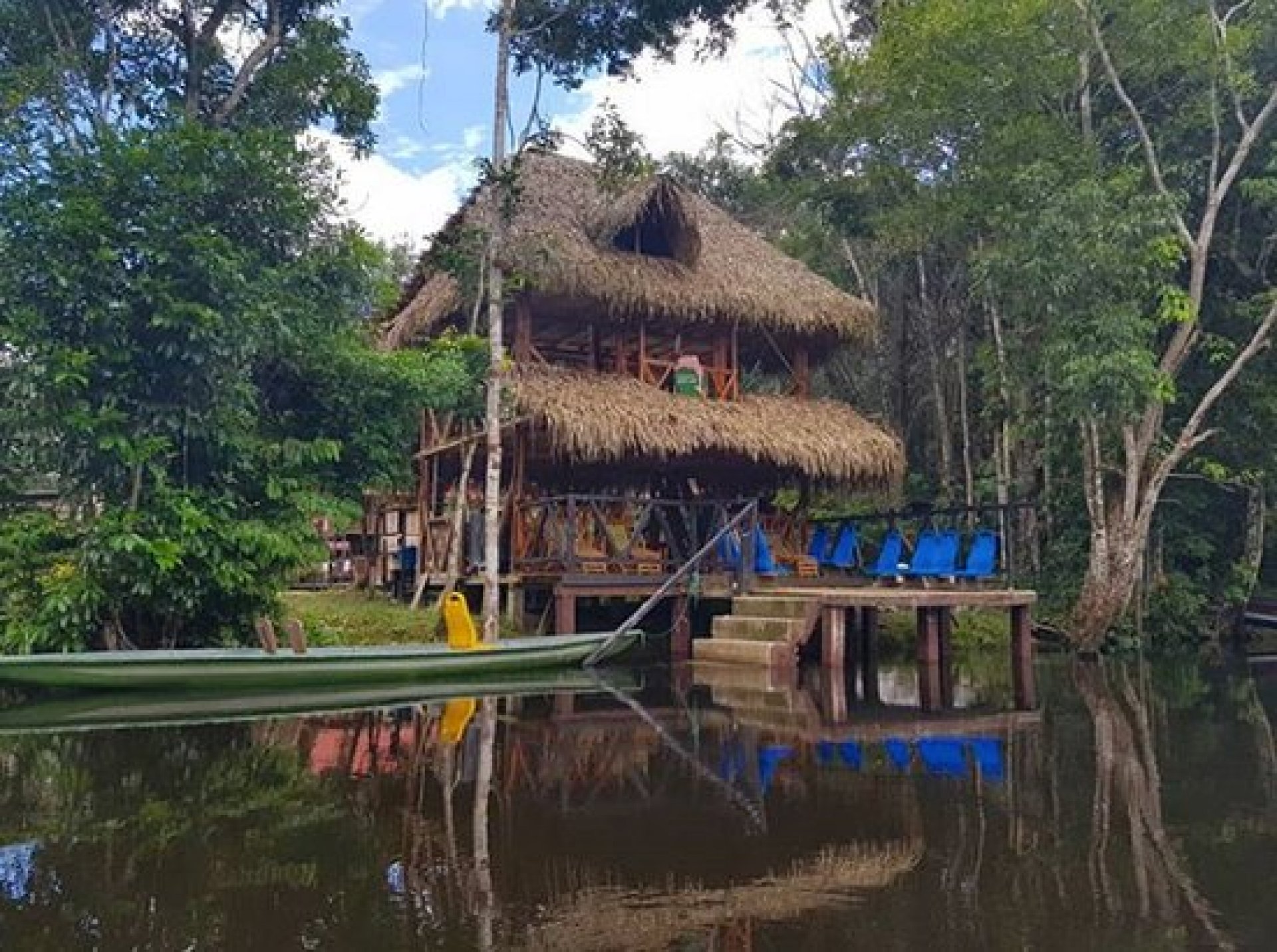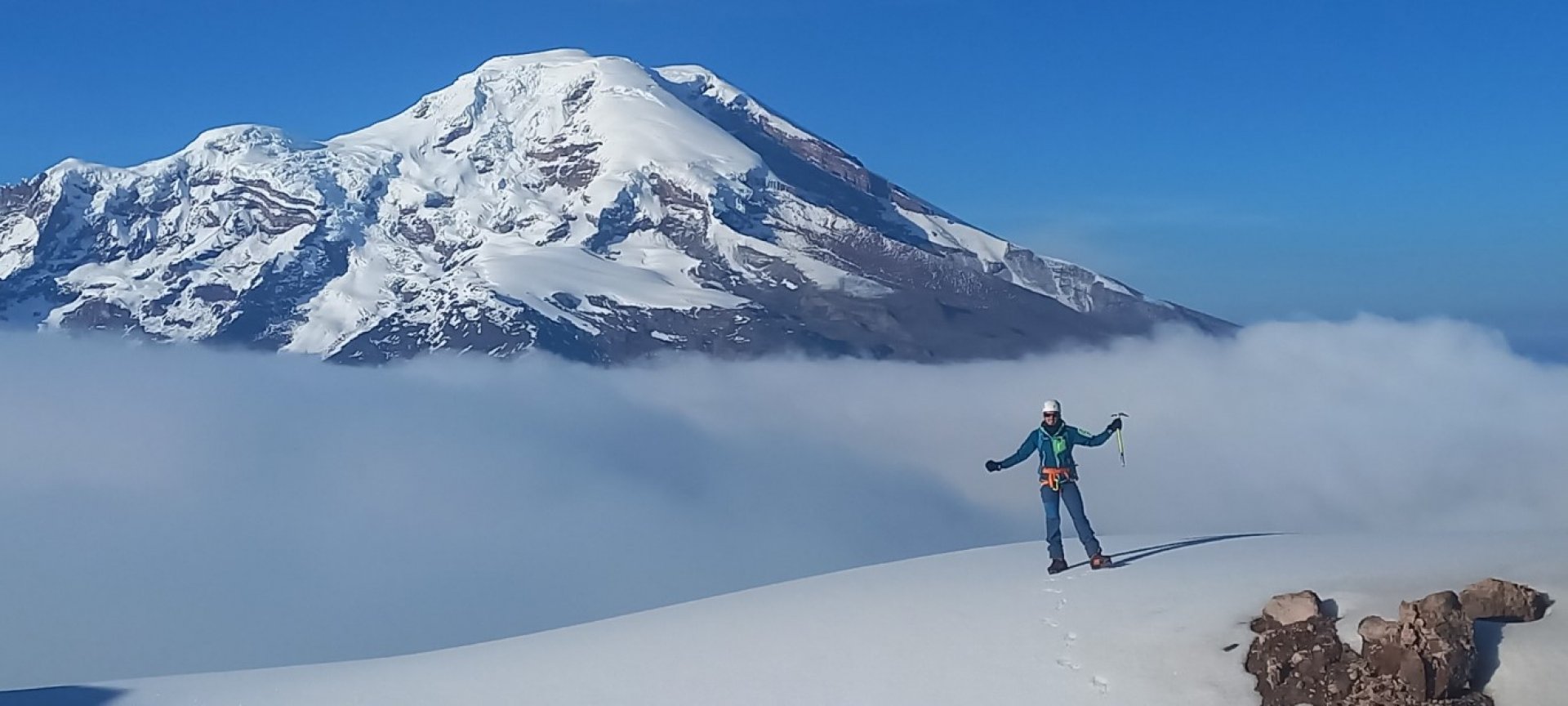Alya Catamaran
A boat created with the highest quality standards in navigation including state of the art technology to showcase the best of the Galápagos Islands.

A boat created with the highest quality standards in navigation including state of the art technology to showcase the best of the Galápagos Islands.

Dolphin Lodge is located in the heart of this natural attraction. Our lodges are situated right alongside the banks of the Cuyabeno River and just a few minutes by motor canoe from the Cuyabeno Lake area. Our location guarantees free navigation and access throughout the year!

This trip proposal is perfect for those who wish to explore the emblematic places of the Galápagos Islands in a short period of time.

Summiting Chimborazo is a challenging and rewarding experience for avid mountaineers. This majestic top is not only the highest in Ecuador

Sea Lion Yacht is also one of the few day tours in the Galápagos that features two naturalist guides on board (compared to just one), which means your clients will enjoy better service, more enriching explorations, and enhanced safety.

The canyoning tour in Chamana is designed to entertain even the most daring adventurers! You will have so much fun on this adventure that you'll want to do it again! So don’t think twice; come with your family, friends, or partner and enjoy the flora and fauna of this beautiful place while engaging in an extraordinary adventure sport!
The Cuyabeno Wildlife Reserve, located in the Ecuadorian Amazon, is one of Ecuador’s most fascinating tourist destinations and a true natural paradise for lovers of ecotourism, biodiversity, and indigenous culture. Situated in the province of Sucumbíos, in the northeastern part of the country, this protected area covers approximately 603,380 hectares of tropical rainforest, making it one of the largest reserves in Ecuador. Cuyabeno is famous for its rivers and lagoons, its rich fauna and flora, and its important role in the conservation of fragile Amazonian ecosystems. Additionally, it is home to several indigenous communities that have kept their traditions alive over time, enriching the tourist experience with a unique cultural component.
Biodiversity and ecosystems
The Cuyabeno Reserve is globally renowned for its biodiversity. The variety of habitats within the reserve—flooded forests, lowland tropical forests, swamps, and lagoons—harbor an astonishing amount of wildlife and plant species. More than 550 species of birds have been recorded, including parrots, macaws, toucans, and hawks, making it a paradise for birdwatchers. Furthermore, Cuyabeno is home to iconic species such as the pink river dolphin, black caiman, anacondas, jaguars, tapirs, capybaras, and a great diversity of monkeys (such as the howler monkey, capuchin monkey, and squirrel monkey).
The rivers of the reserve, like the Cuyabeno River, are the main life systems that sustain the area’s diverse ecosystems. The hydrographic system of the reserve includes 14 lagoons that drastically change between the rainy and dry seasons, providing a stunning visual spectacle and opportunities for ecotourism such as canoe trips, wildlife observation, and jungle exploration tours.
Tourist activities in Cuyabeno
Tourism in the Cuyabeno Reserve focuses on ecotourism and immersion in nature. Tours are usually organized by local operators or indigenous communities and typically last several days, allowing visitors to fully experience the richness of the tropical rainforest. Some of the most popular activities include:
Commitment to sustainability
Tourism in the Cuyabeno Reserve is characterized by being low-impact and sustainable. Most lodges and tour operators work closely with local indigenous communities, ensuring an authentic experience for visitors and ensuring that the benefits of tourism reach the populations that have inhabited these lands for centuries. Additionally, many tour operators follow strict conservation protocols to minimize environmental impact on the area’s fragile ecosystems and are committed to preserving biodiversity and responsible waste management practices.
How to get to Cuyabeno
Access to the Cuyabeno Reserve typically begins in the city of Lago Agrio, which is connected to Quito by domestic flights and buses. From Lago Agrio, visitors are transported by vehicle to the reserve’s port, where the canoe journey to the lodges begins. Most tours include transportation, accommodation, meals, and guided activities, making trip planning easy.
Best time to visit
The climate in the Amazon region is warm and humid year-round, with temperatures ranging from 20°C to 30°C. However, the rainy season (from March to September) and the dry season (from October to February) can affect the travel experience. During the rainy season, rivers and lagoons are fuller, allowing for more navigation and access to different areas of the reserve, while the dry season offers better conditions for walking on jungle trails.
Why visit Cuyabeno?
The Cuyabeno Reserve is an exceptional destination in Ecuador that combines adventure, biodiversity, and indigenous culture in one place. Travelers looking to disconnect from the modern world and immerse themselves in nature will find a transformative experience in Cuyabeno. With its astounding biological diversity, rich cultural heritage, and commitment to sustainability, Cuyabeno is not only a place to discover the Amazon, but also a place to reflect on the importance of preserving one of the planet’s most valuable ecosystems.